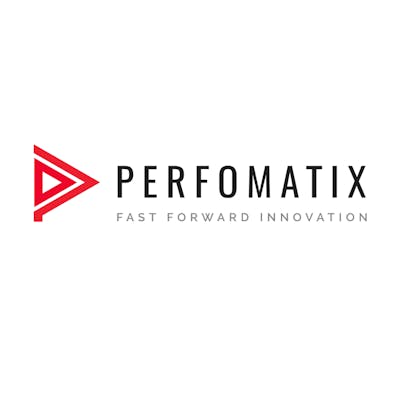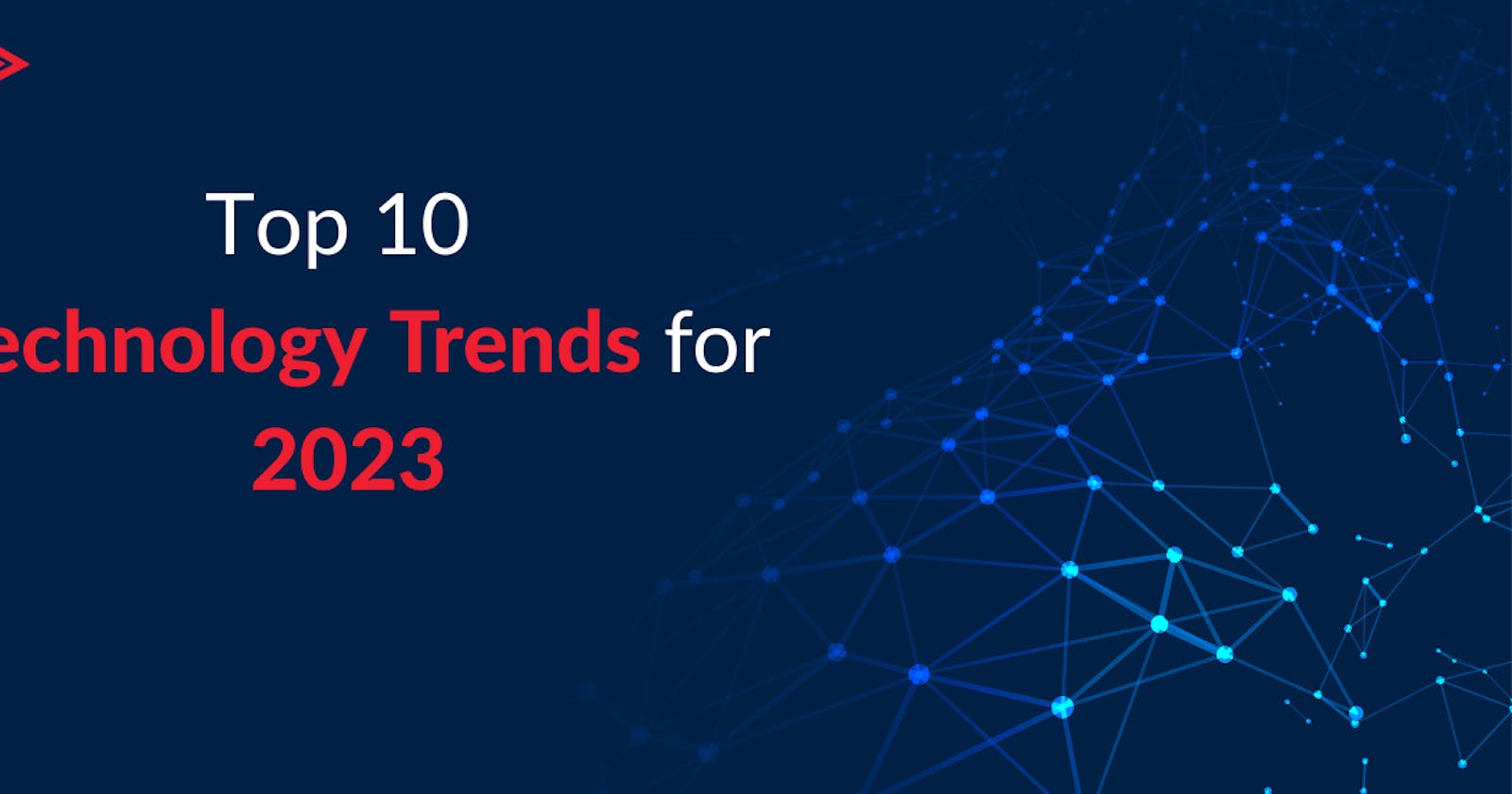The past year has witnessed many changes in technology. One of them is AI’s intervention in creativity-related industries such as design and writing, which shook the world.
The changes were fascinating and frightening at the same time. But one thing became certain: technology is on thrusters, and it will have a huge impact one way or another. For the same reason, people started anticipating more changes in 2023. Furthermore, the disruption and havoc caused by the pandemic COVID-19 have fueled rapid change.
So what’s for 2023?
Let’s have a look at the technology trends for 2023.
- IoT
Fortune Business Insights projects that the Internet of Things industry will increase to $1,854.76 billion by 2028, a CAGR (compound annual growth rate) of 25.4% from 2021 to 2028.
After the emergence of the Internet of Things (IoT), it was hailed as a revolutionary breakthrough from the future. It’s , and the results are a technical and social marvel.
The most recent developments in the Internet of Things (IoT) confirm this. It is currently commonplace in AI and data analytics programs.
More than 43 billion gadgets are expected to be online by the year 2023. They will work harmoniously to collect information, process it, spread it, collect it, and help us use it in the best way possible.
2. Cloud Computing
Easy computing without incurring any costly computing debt is made feasible by cloud computing, which eliminates the need to purchase and maintain the costly infrastructure often associated with such demanding computer tasks.
It is expected that in 2023, businesses will continue to make use of cloud services for the same reasons: to get faster access to cutting-edge technology and to improve internal operations and efficiency.
Companies will continue to prioritise the use of cloud-based solutions for communication, project management, file sharing, videoconferencing, knowledge management, and other purposes to facilitate employee cooperation and productivity from any location at any time
If 2022 was the year of the hybrid cloud, then maybe 2023 will be the year that companies finally see the value in spreading their cloudy workloads across multiple vendors. This strategy involves taking a multi-cloud approach, and it has several benefits, including increased adaptability and safety.
Also, the number of connected homes will grow, and other industries that rely on the cloud, like gaming, media streaming, etc., will go through major optimizations and changes in how they deliver experiences.
3. Cyber Defence
In recent times, the tech industry has gone through some of the worst attacks it has ever come across. Even though cloud computing is one of the innovations of this century, the more devices that are in link, the higher the risk.
Not only the cloud, but the following are the most imminent threats for the year 2023:
mobile banking malware
Data breaches
Ransomware, phishing, and social engineering
and many more.
It’s good to know that just as advanced defenses are being made against cybercriminals, spammers, and other annoying internet users. New security policies are already in draft form, and they will be implemented next year.
Also, the prevalence of 5G, which is a relatively new network, will decrease the pace of the attacks.
When it comes to the cloud, the adoption of a zero-trust cloud security architecture needs to be in consideration. This design assumes that an attacker has already gained access to the network.
4. Data Analytics
Data has godly power. It’s going to change the lives of people and businesses remarkably in 2023.
Augmented analytics is one such change. It is different from other types because it uses machine learning and AI to change the way data analytics are managed, produced, and made.
Augmented analytics tools have become more popular because they can automate tasks that used to be done by hand and give insight into solutions through the use of complex algorithms.
And the market for augmented analytics is expected to grow at a compound annual growth rate (CAGR) of 30.6% and reach 18.5 billion USD by 2022.
Another one is Daas. The “Data-as-a-Service” (DaaS) model is a technology that makes it easier for subscribers to use digital files and get access to them over the internet.
Daas is functional and available. In the years after the pandemic, DaaS industries have grown quickly and the expectation of worth will increase to about $11 billion by 2023. As a leading data science trend, DaaS helps businesses save time and money.
Another one is in-memory computing, which allows computation to take place in the RAM itself.
In-memory computing functions only on the information held in random-access memory (RAM), which eliminates the need for any slow data access.
Retailers, banks, and utilities, among other business clients, may benefit from in-memory computing because it lets them quickly spot trends, analyse large amounts of data on the fly, and speed up their operations.
The huge drop in the price of memory on the market right now is making in-memory computing more and more common.
Last but not least, better consumer data security is largely attributable to data governance. With the help of a new policy, improvement of data security, data management, and customer profiles is possible.
5. Platform Engineering
By making curated self-service layers, platform developers let end users move through complex and separate systems to improve the user experience, delivery speed, process agility, and business value. This is going to bring great changes to the production cycle of software.
With this study’s results in hand, IT leaders may find it easier to spread the platform engineering discipline throughout their companies.
By automating infrastructure tasks and making tools that can be useful for more than once with platform engineering, developers can have a better experience and get more things possible.
6. Wifi 6
The newest iteration of Wi-Fi is Wi-Fi 6. It will still accomplish its primary function, which is to link you to the web, but it will do it more quickly and effectively. Thanks to a number of new technologies
A Wi-Fi 6 router may be the most suitable WiFi router for your home if you have a virtual reality (VR) device, multiple smart home devices, or a large number of other devices.
Wi-Fi 6 has a maximum combined channel throughput of 9.6 GB/s. Wi-Fi 6 can make use of up to 14 extra 80 MHz channels or seven extra super wide 160 MHz channels at 6 GHz for uses like high-definition video streaming and virtual reality.
In short, connected homes will become more connected than ever!
7. Immersive Technology
With the help of communications software, virtual reality, augmented reality, and mixed reality will give people a new and exciting immersive experience by changing how they interact with and see the world around them.
There has been a recent rise in the number of businesses using VR and AR for marketing and internal business purposes. Some even use these technologies in their manufacturing processes.
8. Adaptive AI
As the name suggests, adaptive AI can give response to changes in the real world that were not for when the code was written.
Deviation from the traditional pipeline is what makes adaptive AI different. It has only one single pipeline that can monitor changes and act accordingly.
But the adaptive AI go through millions of situations and use cases before it can learn and adapt to future situations.
9. Sustainable Technology
A lot of consumers at present prefer sustainable products to play their part in reducing carbon emissions, and that will have implications for production and development as well. For instance, many stores have shifted online.
Reason: It’s a good thing to do for the environment and it’s easier than running a store.
So, if companies want to meet their sustainability goals, they will have to spend more on creative solutions that meet ESG needs.
Circular economies: In a circular economy, markets are for rewarding the reuse of items rather than their disposal and replacement with new ones. In a circular economy, recycling or reusing old items like clothing, metal refuse, and outdated gadgets are another method for decreasing trash output.
Existing materials and products are for in this model. IKEA has set a great example for this.
10. Super Apps
Multiple applications in one! That’s the short description of “super apps.”
Super apps let you use all the features of your regular apps as well as the core features of the app that are in the app ecosystem.
Consider meeting someone online through a dating app and booking a restaurant reservation or even a movie ticket through the same app. Sounds cool, right?
Super apps improve the customer experience by collecting and processing vast amounts of data.
If you think this is something new, it’s not. The latest Gartner trends report showed that super apps have been downloaded 4.6 billion times around the world, and by 2028, half of the world’s population will depend on them.
Final Note..
2023 is going to be a good year for users and businesses. New roles will emerge, and technology will make their lives easier.
However, there is a widespread misconception that many jobs will not be there. But new jobs will emerge that will pay much better.
Businesses will become more interactive and customer-friendly, and tech trends in 2023 will show how that will become possible.

